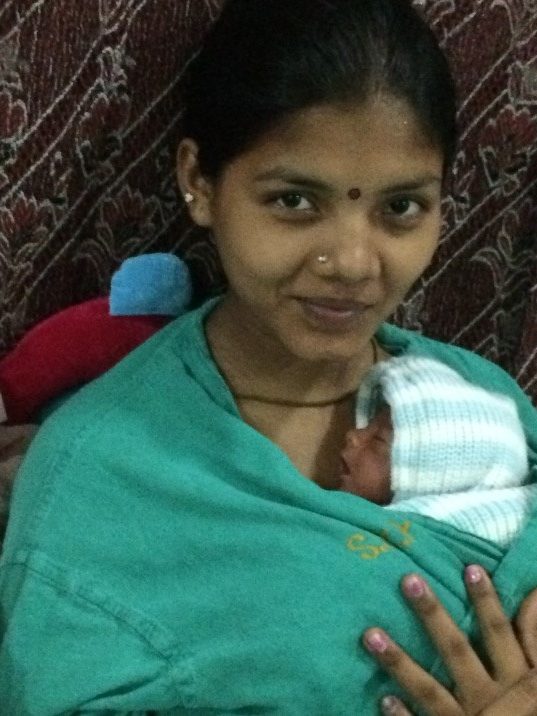Infant mortality remains a major public health dilemma that disproportionally affects low-income countries.[1] In particular, the neonatal period is the most vulnerable time for an infant’s survival. India accounts for a quarter of neonatal deaths globally. An estimated 7.5 million low birth weight (LBW) babies (less than 2500 grams) are born annually, comprising 30% of India’s total live births. Kangaroo Mother Care (KMC), a method promoting exclusive breastfeeding and skin-to-skin contact, has shown to decrease morbidity and mortality while producing protective effects lasting up to 20 years.
Resource limitations that prevent the availability of specialty hospital units, or cause overcrowding and earlier discharges from hospital units, amongst other issues, make practicing KMC at home an imperative to the survival of LBW infants.
Our recently published study, Factors Impacting Practice of Home Kangaroo Mother Care with Low Birth Weight Infants Following Hospital Discharge (read it here), explored the barriers and enablers to continued KMC practice at home in Delhi, India. This observational study was conducted in 2015 at a level II NICU at Kalawati Saran Children’s Hospital in Delhi, India. It followed mothers’ KMC practices from admittance to the hospital KMC ward to 4-weeks post hospital discharge (n=60 mother-infant dyads).
Key study findings included:
- Mothers are willing and able to practice KMC at home. Forty-six of the 53 mothers (86.8%) who completed a 4-week post discharge home visit were still practicing KMC. On average, KMC was practiced 3.3 hours/day and 5.1 days/week.
- Family support increased the amount of time mothers practiced KMC. The top two enablers reported by mothers were significantly correlated to increased KMC practice by mothers; receiving help with household chores and family members practicing skin-to-skin contact.
- Fathers are interested and willing to practice skin-to-skin contact. One mother explained, “I told him [husband] it [KMC] feels good so he said then I will also do KMC (laughing). He also really likes it, if the baby is separated from him he feels alone and so he likes that the baby should sleep on his chest.”
The father’s knowledge of KMC benefits increased from 48% to 80% within 2-weeks post hospital discharge. Nearly half of the participants reported fathers or other family members practicing skin-to-skin contact at 2-weeks post discharge and 58% at 4-weeks post discharge.
- Lack of privacy and lack of motivation reduced the amount of time mothers practiced KMC. These specific barriers were significantly, and negatively, related to the length of time KMC was practiced. Strategies to increase familial support prior to hospital discharge may address these barriers and increase the duration infants experience skin-to-skin contact.
KMC education and instruction with ongoing support for families with LBW infants need to be prioritized for continued KMC at home following hospital discharge. Future programs may increase the dissemination and adoption of KMC by specifically addressing enablers and barriers correlated to duration of home KMC.
For more information about this study, please follow this link.
